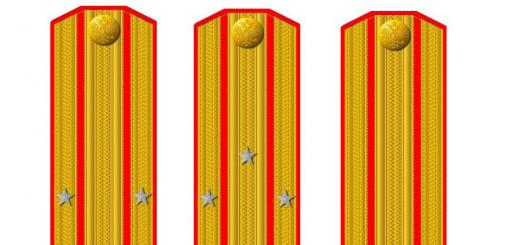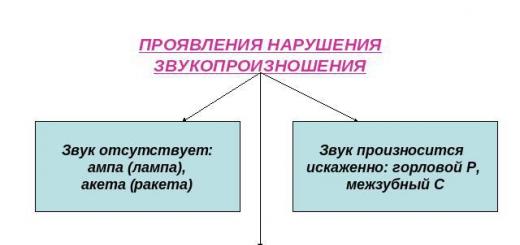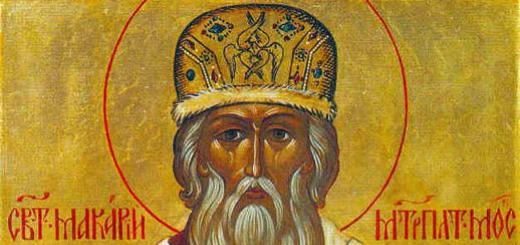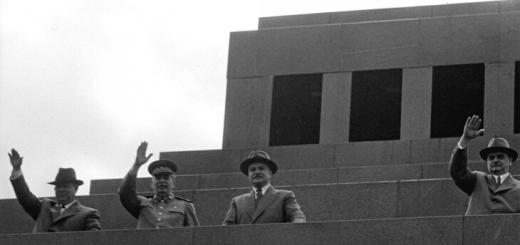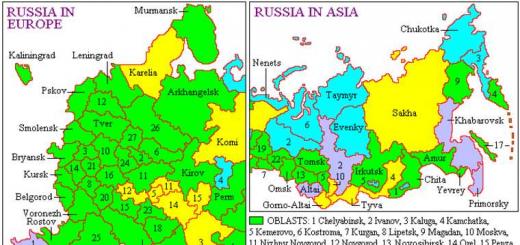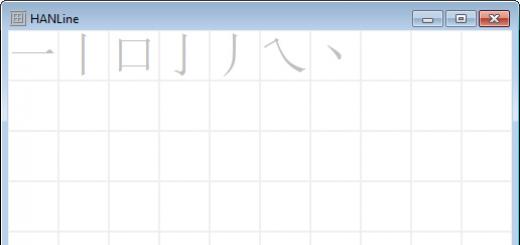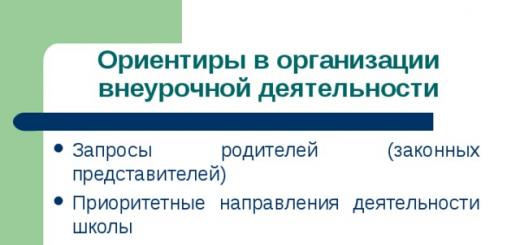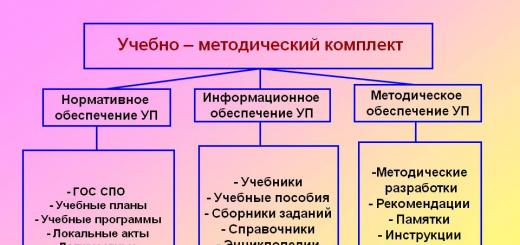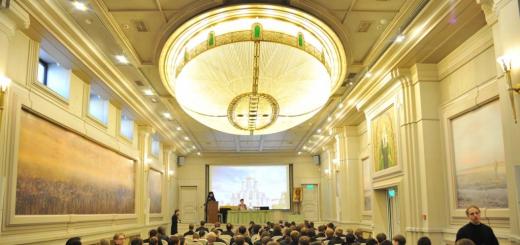70 years ago, on June 26, 1945, the title of “Generalissimo of the Soviet Union” was introduced in the USSR. Introduced by the Decree of the Presidium of the Supreme Soviet of the USSR dated June 26, 1945, based on the consideration of the collective petition of workers, engineers and technical workers and employees of the Moscow plant "Ressora" dated February 6, 1943 and the proposal of the commanders of the front troops, the General Staff of the Red Army, and the Navy dated June 24, 1945
The next day, June 27, 1945, at the proposal of the Politburo of the Central Committee of the All-Union Communist Party of Bolsheviks and the written submission of the front commanders, the title was awarded to Joseph Vissarionovich Stalin “in commemoration of exceptional merits in the Great Patriotic War.” In addition, Joseph Vissarionovich was awarded the Order of Victory and he was awarded the title of Hero of the Soviet Union.
Generalissimo of Russia
Over the entire existence of Russia, only five people have been awarded this highest title. For the first time, the title of generalissimo (from the Latin generalissimus - “the most important”) was awarded in 1569 in France to the Duke of Anjou (later King Henry III). In France, the term “generalissimo” meant an honorary military title, which was given to members of the ruling dynasties and the most prominent statesmen. In the Holy Roman Empire, the Austrian Empire and England, this was the position of commander of the army in the field in time of war or commander-in-chief of all the troops of the state. In Russia and Spain it was an honorary highest military rank.
In Russia, the word “generalissimo” appeared during the reign of Tsar Alexei Mikhailovich. Foreign officers serving in the Russian Army addressed the Great Voivode, who was considered the commander of the army, in this way. In 1696, Tsar Peter Alekseevich first granted the title of Generalissimo to governor Alexei Semyonovich Shein. Alexey Shein came from an old boyar family and was noted by Peter for his successes in the Azov campaigns of 1695-1696, which ended with the capture of the Turkish fortress of Azov. During the first, unsuccessful Azov campaign, Alexey Shein commanded the guard - the Preobrazhensky and Semenovsky regiments. During the second Azov campaign, in 1696, the Russian governor was the commander of the ground forces. After this, the tsar appointed Shein commander-in-chief of the Russian army, commander of artillery, cavalry and head of the Inozemsky order. Shein was responsible for the southern strategic direction, fought against the Turks and Crimean Tatars. However, Shein soon fell out of favor (due to the Streltsy affair) and died in 1700.
Officially, the military rank of generalissimo in the Russian state was introduced by the Military Regulations of 1716. Therefore, formally, the first generalissimo of Russia became the “chick of Petrov’s nest,” the tsar’s favorite Alexander Danilovich Menshikov. He was a controversial personality. On the one hand, he was a loyal associate of Peter for a long time, fought successfully, and played a large role in the decisive Battle of Poltava, where he commanded first the vanguard and then the left flank of the Russian army. At Perevolochna he forced the remaining Swedish troops to capitulate. On the other hand, he was power-hungry and greedy for money and wealth. In terms of the number of serfs, he became the second owner of souls in Russia after Tsar Peter. Menshikov was repeatedly convicted of embezzlement. Peter allowed this to happen to him for a long time, recognizing his services to the Fatherland and under the influence of his wife Catherine. However, at the end of Peter's reign, Menshikov fell into disgrace and was deprived of his main positions.
Under Peter, Menshikov did not receive the title of generalissimo. After Peter's death, he was able to become the de facto ruler of Russia under Catherine I and Peter II. When Peter II Alekseevich became the third All-Russian Emperor on May 6 (17), 1727, Menshikov received the rank of full admiral. And on May 12 he was awarded the title of Generalissimo. As a result, Menshikov received the title of Generalissimo not in recognition of military merits, but as a favor from the Tsar. However, Menshikov was defeated in the fight with other dignitaries and nobles. In September 1727, Menshikov was arrested and exiled. He was stripped of all awards and positions.
The next generalissimo, Prince Anton Ulrich of Brunswick, also did not have any special services to Russia that would be worth noting with such a sign of attention. Anton Ulrich was the husband of Anna Leopoldovna. When Anna Leopoldovna became regent (ruler) of the Russian Empire under the young Emperor Ivan VI, her husband received the highest military rank on November 11, 1740. This happened after a palace coup that ended Biron's reign.
Anton Ulrik, unlike Menshikov, did not possess any managerial or military talents; he was a soft and limited person. Therefore, he was unable to protect his family. On the night of December 5-6, 1741, another palace coup took place in Russia: the Brunswick family was overthrown, and Elizaveta Petrovna ascended the throne. Anton Ulrik was stripped of all ranks and titles and sent into exile with his entire family.
On October 28, 1799, the great Russian commander Alexander Vasilyevich Suvorov became generalissimo of the Russian land and naval forces. He was awarded by Emperor Paul in honor of the legendary Swiss campaign of 1799, when the Russian miracle heroes of Suvorov defeated not only the French, but also the mountains. Alexander Suvorov rightfully received this title. He did not lose a single battle and defeated the Poles, Ottomans and French. Suvorov was the author of “The Science of Victory,” a short manual for soldiers that expressed the Russian spirit, which allows one to emerge victorious in the most difficult conditions. The commanders of the Suvorov school were M.I. Kutuzov, P.I. Bagration and others.
Supreme
After the generalissimos of the 18th century, no one else was awarded the highest military rank in Russia, although the Russian army still fought a lot. The winner of Napoleon's Grand Army, Mikhail Kutuzov, was awarded the rank of Field Marshal for his distinction at Borodino. Even such a great war as the First World War did not lead to the emergence of Russian generalissimos. After the October Revolution of 1917, the previous military ranks were abolished, and along with them the rank of generalissimo.
Only during the most terrible and bloody war of the 20th century - the Great Patriotic War, which became sacred for Russia-USSR, since the question of the survival of Russian civilization and the Russian superethnos was a question, did they return to the idea of reviving this title. After the Great Patriotic War, on June 26, 1945, by decree of the Presidium of the Supreme Soviet of the USSR, the highest military rank of “Generalissimo of the Soviet Union” was introduced and on June 27 it was awarded to Joseph Stalin, who was the Soviet Supreme Commander-in-Chief during the war.
A very interesting legend is associated with the awarding of the title of Generalissimo to Stalin. As you know, Stalin was indifferent to titles and signs of power, he lived modestly, even ascetically. The Supreme Commander did not like sycophants, believing that helpful scoundrels were worse than obvious enemies. According to the recollections of contemporaries, the issue of conferring the title of Generalissimo on Stalin was discussed several times, but the “leader of the peoples” constantly rejected this proposal. At the same time, senior military leaders especially insisted on the revival of this rank; for them, the hierarchy was of great importance. One of these discussions took place in the presence of Stalin. Marshal of the Soviet Union Konev recalled that Stalin reacted as follows: “Do you want to assign a generalissimo to Comrade Stalin? Why does Comrade Stalin need this? Comrade Stalin does not need this. Comrade Stalin already has authority. You need titles for authority. Just think, they found a title for Comrade Stalin - generalissimo. Chiang Kai-shek - Generalissimo, Franco Generalissimo. Nothing to say, good company for Comrade Stalin. You are marshals, and I am a marshal, do you want to remove me from the marshals? Some kind of generalissimo?..” Thus, Stalin gave a categorical refusal.
However, the marshals continued to insist and decided to exert influence through Konstantin Konstantinovich Rokossovsky, one of Stalin’s favorite commanders. Rokossovsky was able to convince Marshal Stalin with a simple but true argument showing the military hierarchy. He said: “Comrade Stalin, you are a marshal and I am a marshal, you cannot punish me!” As a result, Stalin surrendered. Although later, according to Molotov, he repented of this decision: “Stalin regretted that he agreed to the Generalissimo. He always regretted it. And rightly so. It was Kaganovich and Beria who overdid it... Well, the commanders insisted.”
Although, to be honest, he shouldn’t have reproached himself. Stalin deserved this high title. His enormous, simply titanic work still affects Russia’s position as a great power.
Joseph Stalin was the only generalissimo in the history of Russia who not only had the highest military rank of the country, but was also its leader. Under his leadership, Russia-USSR was prepared for war: the army, the economy and society. The Union became a powerful industrial power that was not only able to withstand the war with almost all of Europe led by Hitler's Germany, but also to win a brilliant victory. The Soviet armed forces became the most powerful force on the planet. And the Soviet Union became a superpower, which was a world leader in the field of science and advanced technologies, education and culture, leading humanity into the future. The Red Empire then was a kind of “beacon” for the entire planet, instilling hope in humanity for a bright future.
After Stalin, the title of Generalissimo of the Soviet Union was not awarded, but was listed in the charters until 1993. In 1993, along with other individual military ranks of the Armed Forces of the USSR, the title of Generalissimo of the Soviet Union was not included in the list of military ranks of the Russian Armed Forces.
Translated from Latin, “generalissimo” is simply translated as “the most important,” and is used to designate a military leader of the highest category. This title was used from the 16th century to the beginning of the 21st in a number of countries. The last generalissimo was the leader of the Democratic People's Republic of Korea, Kim Jong Il - in 2011, this title was awarded to him posthumously. At the moment, there is not a single holder of the title of Generalissimo on planet Earth. In general, history has known not many people who wore it - France has the largest gallery of generalissimos, from the 16th to the 19th centuries there were two dozen of them. And in Russia, for example, there have been no more than half a dozen of them over the past three-plus centuries.
The first generalissimos of our country were Ivan Buturlin and Fyodor Romodanovsky, comrades-in-arms of young Peter the Great. True, this was not yet serious - the twelve-year-old king in 1694 appointed them “generalissimos of the amusing troops”, and this title, of course, did not have any official force. On the subject of who exactly became the first real generalissimo, the opinions of historians are divided. Most sources indicate voivode Alexey Shein as such.
During the Azov campaign, he commanded the Preobrazhensky and Semenovsky regiments, and then all the ground forces involved in the campaign. For competent leadership and great contribution to the cause, Shein received the title of generalissimo from Peter on June 28, 1696. However, according to some historians, the first Russian subject to be awarded the title of generalissimo was the boyar Mikhail Cherkassky. He enjoyed great authority both among Peter and among the people, and was in charge of administrative affairs. For the Azov campaign, he built a warship at his own expense. According to some sources, for these and other merits, the council of courtiers, with the active participation of Peter, decided on December 14, 1695 to grant Cherkassky the indicated title (six months earlier than Shein).
Photo: Voivode Alexey Shein, the first (according to most sources) Russian generalissimo
Subsequently, Russia had no luck with generalissimos - there were three of them, and all of them did not hold this rank for long. The famous associate of Peter the Great, Prince Menshikov, was awarded this high title under Peter the Great, but lost it just four months after the conferment, falling out of favor. Duke Anton Ulrich of Brunswick, having become a generalissimo, ceased to be one a little over a year later after a palace coup, as a result of which his wife Anna Leopoldovna was overthrown. Only Alexander Vasilyevich Suvorov, Prince of Italy, Count of Rymnik, and so on and so forth, having been awarded the title of Generalissimo, safely wore it until the end of his days - but the trouble is that he was awarded it six months before his death.
Photo: The most famous generalissimo of the Russian Empire - Alexander Vasilyevich Suvorov

In the Soviet Union there was only one generalissimo - the man who won the Great Patriotic War. The first documented wish to confer the title of Generalissimo on Joseph Vissarionovich Stalin is dated February 3, 1943 - it was sent to Kalinin from the workers of the Ressora plant. The letter proposed, in honor of the upcoming 25th anniversary of the creation of the Red Army and for “outstanding military merits unsurpassed in military history in the liberation of the Motherland,” to award Stalin the Order of Suvorov, 1st degree, and to honor “the highest military rank - generalissimo.”
Photo: Letter from a collective of workers, engineers and employees of the Moscow plant "Ressora" with a petition to award Stalin I.V. the Order of Suvorov 1st degree and assign him the highest military rank - Generalissimo Krasnoy
Army

At that moment, however, such a rank did not exist in the Red Army; it was considered premature to establish it at the request of the workers, and it was still too far from victory to throw away such large shoulder straps in advance. It is likely that other similar proposals were made, but the final point in making the decision was a note from leading Soviet military leaders submitted to the Politburo on June 24, 1945, the day of the Victory Parade. It proposed establishing the title of Generalissimo of the Soviet Union and conferring it on Stalin “for outstanding leadership of the combat operations of the Army and the Navy” and “in commemoration of exceptional merits in the Great Patriotic War,” as well as awarding Stalin the Order of Victory and the title of Hero of the Soviet Union.
Photo: Note from the commanders of the front troops, the General Staff of the Red Army, the Navy to the Politburo of the Central Committee of the All-Union Communist Party of Bolsheviks with proposals to award Stalin I.V. with the Order of Victory, conferring on him the title of Hero of the Soviet Union, the title of Generalissimo of the Soviet Union, about establishment of the Order of Stalin.

Just two days later, on June 26, 1945, the title of Generalissimo of the Soviet Union was established, and the next day, on June 27, it was awarded to Stalin, along with the Hero's star and the second Order of Victory proposed in the note (Stalin received the first in April 1944 for Dnieper-Carrpathian operation).
The development of the Generalissimo uniform began after Stalin was awarded this title. The work was carried out by the rear service of the Red Army, and this work was extremely secret - only in 1996 the general public was able to see a demonstration sample of the uniform (it is currently on display at the Central Museum of the Great Patriotic War on Poklonnaya Hill), and preliminary sketches and working sketches were published five years later, in 2001. When creating uniforms and insignia, they were based on the already existing uniform of the chief marshal of the military branch. As development progressed, the number of details that referred to the uniforms of the legendary commanders of the past grew - an overcoat with a cape, embroidered sleeves, a stand-up collar. Even the shoulder straps, which were initially supposed to differ from the marshal's ones only in some details, were eventually given the shape of an epaulette.
Photo: Various versions of the shoulder straps of the Generalissimo of the Soviet Union, on the left - the epaulette of the finally adopted model

Photo: Epaulet of the Generalissimo's uniform, exhibited at the Central Military Museum.

The resulting image most definitely referred to Kutuzov. Perhaps in this way the creators tried to please Stalin, who, according to some evidence, had a certain weakness for the imperial style of old Russia, including uniforms with epaulettes, aiguillettes and other “archaic” attributes. The man depicted in the sketches, curiously, does not look like Stalin at all, but is extremely reminiscent of Zhukov.
Photo: Sketches of the uniform of the Generalissimo of the Soviet Union

Stalin himself was always very skeptical about honors addressed to him, so he invariably rejected all proposals to confer the title of Generalissimo. According to the recollections of contemporaries, Marshal Rokossovsky was eventually able to convince him, pointing out that as long as Stalin held the rank of marshal, he formally could not order his military leaders, who also had marshal ranks. True, Stalin later very much regretted that he agreed to the Generalissimo. He emphasized this by the fact that he did not wear the fluffy, elaborate uniform discussed above. He continued to wear a marshal's jacket - white with a stand-up collar - or a specially tailored light gray jacket of the pre-war general's cut - with a turn-down collar and four pockets. In both cases, the shoulder straps on the tunic were marshal's. There is a version according to which Stalin decided that a pompous gold-embroidered uniform with epaulettes would look impressive - on a tall, athletic military man such a uniform would look impressive, and a short, unprepossessing elderly man in it would look like a doorman.
Photo: On the left is the uniform of the Generallisimo of the Soviet Union, made for the 1945 Victory Parade. On the right is the jacket in which Stalin watched the Victory Parade from the rostrum of the Mausoleum.

Whether this is true or not is not known for certain, but the fact remains that even on ceremonial portraits and propaganda posters Stalin was not depicted in the uniform of the general general of the original project. By the way, Joseph Vissarionovich did not like a large number of awards - in most cases he wore only the star of the Hero of Socialist Labor, received in 1939. Only in photographs for personal files and in a few portraits (mostly painted after his death) can Stalin be seen with all his awards.
Photo: Admiral I.S. Yumashev, A.N. Kosygin, I.V. Stalin, A.N. Poskrebyshev and Admiral F.S. Oktyabrsky on board the cruiser Molotov, 1947

Photo: Meeting with Field Marshal Montgomery in the Kremlin, January 1947

Photo: Stalin and Beria, 1948

Because of this, the fact that Stalin had the title of Generalissimo was not emphasized either during his life or even after his death. It is difficult now, through the veil of the past years, to reliably understand whether the assignment of this title to Stalin was sincere gratitude, a loyal desire to please, or something else, but the attempt in any case was not crowned with success. Unlike many of his foreign colleagues, both modern and later, and earlier and later, the Soviet leader did not like pompous honors and ringing titles.
After Stalin's death, the title of Generalissimo of the Soviet Union was no longer awarded to anyone. There were repeated proposals from the localities (mainly from the military) to assign it to Khrushchev and then to Brezhnev, but they did not receive an official move. The rank was abolished in 1993, along with other Soviet military ranks. The list of military ranks of the Armed Forces of the Russian Federation, created at the same time, did not include the rank of generalissimo.
All...
70 years ago, on June 26, 1945, the title of “Generalissimo of the Soviet Union” was introduced in the USSR. Introduced by the Decree of the Presidium of the Supreme Soviet of the USSR dated June 26, 1945, based on the consideration of the collective petition of workers, engineers and technical workers and employees of the Moscow plant "Ressora" dated February 6, 1943 and the proposal of the commanders of the front troops, the General Staff of the Red Army, and the Navy dated June 24, 1945
The next day, June 27, 1945, at the proposal of the Politburo of the Central Committee of the All-Union Communist Party of Bolsheviks and the written submission of the front commanders, the title was awarded to Joseph Vissarionovich Stalin “in commemoration of exceptional merits in the Great Patriotic War.” In addition, Joseph Vissarionovich was awarded the Order of Victory and he was awarded the title of Hero of the Soviet Union.
Generalissimo of Russia
In the entire history of Russia, only five people have been awarded this highest title. For the first time, the title of generalissimo (from the Latin generalissimus - “the most important”) was awarded in 1569 in France to the Duke of Anjou (later King Henry III). In France, the term “generalissimo” meant an honorary military title, which was given to members of the ruling dynasties and the most prominent statesmen. In the Holy Roman Empire, the Austrian Empire and England, this was the position of commander of the army in the field in time of war or commander-in-chief of all the troops of the state. In Russia and Spain it was an honorary highest military rank.
In Russia, the word “generalissimo” appeared during the reign of Tsar Alexei Mikhailovich. Foreign officers serving in the Russian Army addressed the Great Voivode, who was considered the commander of the army, in this way. In 1696, Tsar Peter Alekseevich first granted the title of Generalissimo to governor Alexei Semyonovich Shein. Alexey Shein came from an old boyar family and was noted by Peter for his successes in the Azov campaigns of 1695-1696, which ended with the capture of the Turkish fortress of Azov. During the first, unsuccessful Azov campaign, Alexey Shein commanded the guard - the Preobrazhensky and Semenovsky regiments. During the second Azov campaign, in 1696, the Russian governor was the commander of the ground forces. After this, the tsar appointed Shein commander-in-chief of the Russian army, commander of artillery, cavalry and head of the Inozemsky order. Shein was responsible for the southern strategic direction, fought against the Turks and Crimean Tatars. However, Shein soon fell out of favor (due to the Streltsy affair) and died in 1700.
Officially, the military rank of generalissimo in the Russian state was introduced by the Military Regulations of 1716. Therefore, formally, the first generalissimo of Russia became the “chick of Petrov’s nest,” the tsar’s favorite Alexander Danilovich Menshikov. He was a controversial personality. On the one hand, he was a loyal associate of Peter for a long time, fought successfully, and played a large role in the decisive Battle of Poltava, where he commanded first the vanguard and then the left flank of the Russian army. At Perevolochna he forced the remaining Swedish troops to capitulate. On the other hand, he was power-hungry and greedy for money and wealth. In terms of the number of serfs, he became the second owner of souls in Russia after Tsar Peter. Menshikov was repeatedly convicted of embezzlement. Peter allowed this to happen to him for a long time, recognizing his services to the Fatherland and under the influence of his wife Catherine. However, at the end of Peter's reign, Menshikov fell into disgrace and was deprived of his main positions.
Under Peter, Menshikov did not receive the title of generalissimo. After Peter's death, he was able to become the de facto ruler of Russia under Catherine I and Peter II. When Peter II Alekseevich became the third All-Russian Emperor on May 6 (17), 1727, Menshikov received the rank of full admiral. And on May 12 he was awarded the title of Generalissimo. As a result, Menshikov received the title of Generalissimo not in recognition of military merits, but as a favor from the Tsar. However, Menshikov was defeated in the fight with other dignitaries and nobles. In September 1727, Menshikov was arrested and exiled. He was stripped of all awards and positions.
The next generalissimo, Prince Anton Ulrich of Brunswick, also did not have any special services to Russia that would be worth noting with such a sign of attention. Anton Ulrich was the husband of Anna Leopoldovna. When Anna Leopoldovna became regent (ruler) of the Russian Empire under the young Emperor Ivan VI, her husband received the highest military rank on November 11, 1740. This happened after a palace coup that ended Biron's reign.
Anton Ulrik, unlike Menshikov, did not possess any managerial or military talents; he was a soft and limited person. Therefore, he was unable to protect his family. On the night of December 5-6, 1741, another palace coup took place in Russia: the Brunswick family was overthrown, and Elizaveta Petrovna ascended the throne. Anton Ulrik was stripped of all ranks and titles and sent into exile with his entire family.
On October 28, 1799, the great Russian commander Alexander Vasilyevich Suvorov became generalissimo of the Russian land and naval forces. He was awarded by Emperor Paul in honor of the legendary Swiss campaign of 1799, when the Russian miracle heroes of Suvorov defeated not only the French, but also the mountains. Alexander Suvorov rightfully received this title. He did not lose a single battle and defeated the Poles, Ottomans and French. Suvorov was the author of “The Science of Victory,” a short manual for soldiers that expressed the Russian spirit, which allows one to emerge victorious in the most difficult conditions. The commanders of the Suvorov school were M.I. Kutuzov, P.I. Bagration and others.
Supreme
After the generalissimos of the 18th century, no one else was awarded the highest military rank in Russia, although the Russian army still fought a lot. The winner of Napoleon's Grand Army, Mikhail Kutuzov, was awarded the rank of Field Marshal for his distinction at Borodino. Even such a great war as the First World War did not lead to the emergence of Russian generalissimos. After the October Revolution of 1917, the previous military ranks were abolished, and along with them the rank of generalissimo.
Only during the most terrible and bloody war of the 20th century - the Great Patriotic War, which became sacred for Russia-USSR, since the question of the survival of Russian civilization and the Russian superethnos was a question, did they return to the idea of reviving this title. After the Great Patriotic War, on June 26, 1945, by decree of the Presidium of the Supreme Soviet of the USSR, the highest military rank of “Generalissimo of the Soviet Union” was introduced and on June 27 it was awarded to Joseph Stalin, who was the Soviet Supreme Commander-in-Chief during the war.
A very interesting legend is associated with the awarding of the title of Generalissimo to Stalin. As you know, Stalin was indifferent to titles and signs of power, he lived modestly, even ascetically. The Supreme Commander did not like sycophants, believing that helpful scoundrels were worse than obvious enemies. According to the recollections of contemporaries, the issue of conferring the title of Generalissimo on Stalin was discussed several times, but the “leader of the peoples” constantly rejected this proposal. At the same time, senior military leaders especially insisted on the revival of this rank; for them, the hierarchy was of great importance. One of these discussions took place in the presence of Stalin. Marshal of the Soviet Union Konev recalled that Stalin reacted as follows: “Do you want to assign a generalissimo to Comrade Stalin? Why does Comrade Stalin need this? Comrade Stalin does not need this. Comrade Stalin already has authority. You need titles for authority. Just think, they found a title for Comrade Stalin - generalissimo. Chiang Kai-shek - Generalissimo, Franco Generalissimo. Nothing to say, good company for Comrade Stalin. You are marshals, and I am a marshal, do you want to remove me from the marshals? Some kind of generalissimo?..” Thus, Stalin gave a categorical refusal.
However, the marshals continued to insist and decided to exert influence through Konstantin Konstantinovich Rokossovsky, one of Stalin’s favorite commanders. Rokossovsky was able to convince Marshal Stalin with a simple but true argument showing the military hierarchy. He said: “Comrade Stalin, you are a marshal and I am a marshal, you cannot punish me!” As a result, Stalin surrendered. Although later, according to Molotov, he repented of this decision: “Stalin regretted that he agreed to the Generalissimo. He always regretted it. And rightly so. It was Kaganovich and Beria who overdid it... Well, the commanders insisted.”
Although, to be honest, he shouldn’t have reproached himself. Stalin deserved this high title. His enormous, simply titanic work still affects Russia’s position as a great power.
Joseph Stalin was the only generalissimo in the history of Russia who not only had the highest military rank of the country, but was also its leader. Under his leadership, Russia-USSR was prepared for war: the army, the economy and society. The Union became a powerful industrial power that was not only able to withstand the war with almost all of Europe led by Hitler's Germany, but also to win a brilliant victory. The Soviet armed forces became the most powerful force on the planet. And the Soviet Union became a superpower, which was a world leader in the field of science and advanced technologies, education and culture, leading humanity into the future. The Red Empire then was a kind of “beacon” for the entire planet, instilling hope in humanity for a bright future.
After Stalin, the title of Generalissimo of the Soviet Union was not awarded, but was listed in the charters until 1993. In 1993, along with other individual military ranks of the Armed Forces of the USSR, the title of Generalissimo of the Soviet Union was not included in the list of military ranks of the Russian Armed Forces.
In the 20th century in our history, only Stalin had the shoulder straps of a generalissimo. The workers of one of the Soviet factories “asked” for this title after the victory over Germany in 1945. Of course, all residents of the Union learned about this “petition” of the proletariat.
Few people remember, but Stalin was awarded the highest title of the tsarist empire. This was the final turning point in the consciousness of the Bolsheviks, since before that ideology had rejected all attempts. Stalin realized that in a difficult hour for the country, the continuity and traditions of the victorious spirit of the Russian Empire, so hated by the communists, should save the country. Shoulder straps are introduced - a distinctive symbol of the “imperial punishers”, the status of an officer, which had only an abusive meaning before, and some new ranks.
These reforms, in a difficult hour for the country, were supposed to unite all the forces scattered by the civil war. The Germans understood that the weakness of the USSR was the generation gap. They skillfully took advantage of this, recruiting numerous battalions of Red Army soldiers. Stalin and his military entourage understood this.
It is during critical years for the country that the continuity of generations is established. Thinking about these events, we will remember how many generalissimos there were in our history. We will also tell you some interesting facts about Stalin related to this title.
Generalissimos in world history
The term "generalissimo" comes to us from Latin. Translated, it means “the most important.” This is the highest rank ever introduced into the army of any state. The generalissimo's uniform gave not only military status, but also civil and political status. This title was awarded only to truly special people.
This title was until recently held by Chiang Kai-shek (pictured above), an opponent of the Chinese communists. But today there are no active generalissimos in the world. This rank is also missing in the system of our army. The last person in the world to hold such a high rank was Kim Jong Il, the leader of the DPRK, who was only posthumously awarded it in 2011. For North Koreans, this is not just a person, it is God, a symbol of the nation. This country maintains a calendar directly related to this politician. It is unlikely that anyone else with such a high rank could appear in the DPRK.

History knows little about generalissimos. In France, over 400 years, only two dozen figures have been awarded this title. In Russia, to count them over the last three hundred years, the fingers of one hand are enough.
Who was the first generalissimo? Version one: “amusing commanders”
The first to receive this title in Russian history were comrades of Peter the Great - Ivan Buturlin and Fyodor Romodanovsky. However, every boy playing in the yard with friends can appropriate it in a similar way. In 1864, twelve-year-old Peter awarded them the title of “generalissimo of the amusing troops” during a game. They stood at the head of two newly formed “amusing” regiments. There were no correspondences with real ranks of that time.
Version two: Alexey Shein
Officially, the high ranks of the “amusing commanders” were not supported by written acts and orders. Therefore, historians name Shein as the main contender for the role of the first generalissimo. During the Azov campaign, he commanded the Preobrazhensky and Semenovsky regiments. Peter the Great appreciated Shein's competent leadership, tactics and military skill, for which he awarded him this high rank on June 28, 1696.
Version three: Mikhail Cherkassky
Peter I loved to give high government titles and awards “from the master’s shoulder.” Often these were chaotic and sometimes rash decisions that violated the usual and logical course of things. Therefore, it was during the time of Peter I that the first generalissimos of the Russian state appeared.
One of these, according to historians, was boyar Mikhail Cherkassky. He was in charge of administrative affairs and was popular in society. With his own money he built a warship for
Peter I highly appreciated his contribution to the country. Other, less significant, but useful matters for society did not go unnoticed. For all this, Peter awarded the boyar Cherkassky with the highest military rank. According to historians, this happened on December 14, 1695, i.e. six months before Shein.
Fatal title
In the future, those who wore the generalissimo's shoulder straps were unlucky. There were three of them in total: Prince Menshikov, Duke Anton Ulrich of Brunswick and Alexander Vasilyevich Suvorov, who had more than one title and regalia.
Prince Menshikov, a loyal friend and ally of Peter the Great, was endowed with this title by the young Peter the Second. The young emperor was supposed to marry the prince's daughter, but palace intrigues tipped the scales in the other direction. To be fair, let’s say that young Peter did not have time to get married. At the last moment he died of smallpox, after which Prince Menshikov was stripped of all titles and awards and exiled to his domain in Berezniki, away from the capital.

The second holder of the highest military rank is her husband, Duke Anton Ulrich of Brunswick. However, he was not there for long. A year later, he was also deprived of this title after his wife was overthrown from the throne.
The third person to receive a high rank in the empire was A.V. Suvorov. There were legends all over the world about his victories. This title was never questioned. But the tragedy is that he served as generalissimo for less than six months, after which he died.

After Suvorov, no one in the Russian Empire received this high title. Thus, we can count how many generalissimos there were in Russian history before the USSR. We'll talk about Stalin's title a little later.
Instead of titles - positions
After the revolution, the Bolsheviks had a negative attitude towards any reminders of the tsarist regime. The term "officer" was a dirty word. As a rule, a holder of this status who did not manage to immigrate on time came under persecution by the authorities. Often this ended in execution.
Instead of titles, the country had a certain system of positions. For example, the famous Chapaev was a division commander, that is, a division commander. The official title for such a position is “Comrade Divisional Commander.” The highest rank was considered marshal. And the statutory address to him is “Comrade Marshal”, or by his last name: “Comrade Zhukov”, “Comrade Stalin”, etc. That is, Stalin’s title throughout the war was precisely marshal, and not generalissimo.
It is noteworthy that the ranks of general and admiral appeared later, only in 1940.
Organizing the system
During the difficult days of the war, the Soviet leadership undertook serious military reforms in the army system. The old positions were abolished. In their place, “royal” military distinctions and ranks were introduced, and the army itself became not “red workers’ and peasants”, but “Soviet,” and the prestige of the status of officers was introduced.
Many people, especially mature and elderly people, reacted negatively to this reform. They can be understood: for them an officer was synonymous with “oppressor”, “imperialist”, “bandit”, etc. However, in general, this reform strengthened the morale in the army and made the management system logical and complete.
All of the country's military leadership and Stalin personally understood that these measures would help achieve victory and streamline the structure and hierarchy. Many people think that it was at this time that the highest rank of generalissimo was introduced. However, this is also a misconception. Stalin was a marshal throughout the war, right up to victory.
Reward for victory
So, until 1945, the highest rank in the USSR was marshal. And only after the Victory, on June 26, 1945, the title of Generalissimo of the Soviet Union was introduced. And the next day, based on the “request” of the workers, it was assigned to I.V. Stalin.

They had been talking about introducing a separate rank for Joseph Vissarionovich for a long time, but the leader himself constantly rejected all these proposals. And only after the war, succumbing to Rokossovsky’s persuasion, he agreed. It is worth noting that until the end of his days, Stalin wore exactly the marshal’s uniform, albeit slightly deviated from the regulations. The address “Comrade Stalin” was considered a violation of the charter, since this address was specifically addressed to the marshal, but the leader himself did not object. After June 1945, he should have been addressed as “Comrade Generalissimo.”
After Stalin, there were proposals to give the highest rank to two other leaders of the USSR - Khrushchev and Brezhnev, but this never happened. After 1993, this rank was not included in the new army hierarchy of the Russian Federation.
Generalissimo shoulder straps
The development of a uniform for the new rank began immediately after it was awarded to Stalin. This work was carried out by the rear service of the Red Army. For a long time, all materials were classified as “secret”, and only in 1996 the data was made public.

When creating the uniform, we tried to take into account the current uniforms of the chief marshal of the military branch, but at the same time create something special, unlike all the others. After all the work, the Generalissimo's shoulder straps resembled the uniform of Count Suvorov. Perhaps the developers were trying to please Stalin, who had a weakness for the style of uniforms of the Russian Empire with epaulettes, aiguillettes and other paraphernalia.
Stalin subsequently said more than once that he regretted agreeing to award him this highest military rank. He will never put on the new generalissimo uniform, and all developments will be classified as “secret.” Stalin will continue to wear a marshal's uniform - a white jacket with a stand-up collar or a gray pre-war cut - with a turned-down collar and four pockets.

Possible reason for the rejection of the new form
However, what is the reason why Stalin refused to wear a special uniform? There is an opinion that the leader had a number of complexes regarding his appearance and believed that on a short, unprepossessing elderly man such a curvy figure would look ridiculous and ridiculous.
It is according to this version, as some believe, that Stalin refused to head the magnificent ceremony and sign the act of surrender of Germany. However, this is just a theory. Whether it was true or not, we, the descendants, can only speculate.
On June 26, 1945, by decree of the Presidium of the Supreme Soviet of the USSR, the highest military rank was introduced - “Generalissimo of the Soviet Union”. This rank also existed in the military system of Tsarist Russia. True, only a few have been awarded this honorary title over three centuries. Some for military exploits, others for belonging to the imperial family. Today we will remember who these chosen ones were.
Peter I, as a teenager, produced his associates Fyodor Yurievich Romodanovsky And Ivan Ivanovich Buturlin into the “Generalissimos of the Amusing Troops.” These titles were used during the king's amusements and were not taken seriously.
Despite the fact that the title of generalissimo appears only in the Military Regulations of 1716, the title of “most important in the army” was first awarded in 1696. He became a comrade-in-arms of Peter I, a boyar Alexey Semenovich Shein. In the Azov campaigns, he first commanded the Semenovsky and Preobrazhensky regiments, and then all the ground forces. After the capture of Azov, Peter I elevated Shein to the rank of generalissimo for his military merits.
Another close associate of Peter I, Prince Alexander Danilovich Menshikov. Major victories of Russian troops in the Northern War are associated with his name. However, despite the favor of the ruler, it was not Peter I, but his grandson Peter I who promoted Field Marshal Menshikov to generalissimo. 1727. “Today I want to destroy the field marshal!” said the emperor, shocking the audience. And then he handed the prince a patent for the highest military rank.

Along with the largest commanders, a member of the imperial dynasty who had no military merit was also awarded the highest military rank. Princess Anna Leopoldovna (mother of John VI) during her short reign awarded the title of Generalissimo to her husband, Duke Anton Ulrich of Brunswick. The highest military rank was not for long the privilege of Anna Leopoldovna's husband: after Elizabeth Petrovna came to power, the Duke of Brunswick was stripped of all ranks and sent into exile.

The only generalissimo who truly deserved the highest military rank was Alexander Vasilievich Suvorov. Having become famous during the Italian and Swiss campaigns, he is rightfully considered a great commander. “Fight not with numbers, but with skill,” said Suvorov and always followed this rule. It is not for nothing that most of his victories were won when the enemy was outnumbered.


